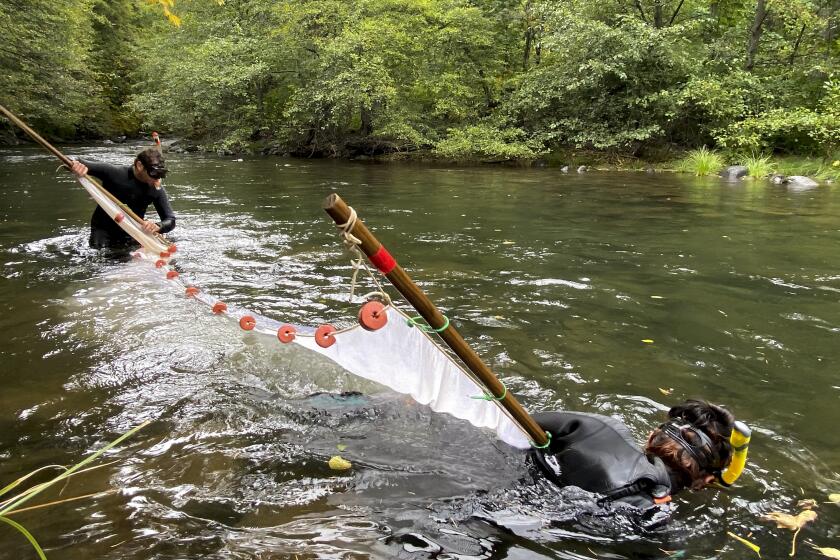Sponging Incidents at Santa Anita
The sponging of three horses at Santa Anita, believed to be the first incidence of this illegal practice in California in at least 50 years, has some trainers on edge.
“It’s scary,” Ian Jory said. “You wonder how somebody could gain access to do something like this.”
Two 3-year-old fillies were scratched Wednesday from a race for $40,000 claimers after sponges were discovered in their noses.
Another filly, who resembled one of the scratched horses, was reportedly found to have had a sponge in one of her nasal passages after a workout on Tuesday.
Unlike humans, horses breathe only through their noses and a sponge would severely reduce a horse’s air flow.
The scratched horses were Spiderette, the morning-line favorite in a race that had a $37,440 purse, and My Sweet Lucy.
Spiderette, winner of a small stake for California-breds at Fairplex Park last month, is trained by Ed Moger Jr. According to the Daily Racing Form, Moger also trains the filly found to have a sponge in her nose after a workout.
Frank Olivares trains My Sweet Lucy, who had run poorly in her last three starts after having won twice earlier in the year. Neither Moger nor Olivares could be reached for comment.
“They’re both very concerned about this,” said Roy Wood, executive director of the California Horse Racing Board. “Just like the rest of us, they think this is outrageous, that someone would do this to an animal. They’re been very supportive and cooperative in our investigation.”
In a track-wide memorandum issued Wednesday, Wood cited the discovery of sponges in two horses that were scratched. In an interview Thursday, he would neither confirm nor deny that a sponge was found in a third horse.
“For the sake of the investigation, I’d just as soon not get into the numbers,” Wood said.
Ingrid Fermin, one of the three stewards at Santa Anita, said that the sponge in Spiderette’s nose was discovered by a veterinarian about 10 a.m. Wednesday.
“He noticed a bulge in the nostril,” Fermin said.
Wood’s memorandum was a security alert that urged trainers to have their horses endoscopically examined before they run. It is often difficult to spot a sponge without scoping a horse.
Jory, whose horses are stabled at Hollywood Park, said there was a security breach at his barn before the running of the $300,000 Triple Bend Handicap in Inglewood on July 1.
“About 11 o’clock the night before the race, one of the grooms saw a stranger at the barn,” Jory said. “He chased the guy away and he drove off.”
The next day, Jory’s Explicit, after racing near the lead early, faded to last place as Ceeband, at 44-1, won the race.
“It wasn’t a sponge,” Jory said. “My horse had a knee injury in the race.”
Pete Pedersen, another of the Santa Anita stewards and a California racing official whose career dates to the 1950s, cannot recall a sponging case in the state.
Five years ago, there was an outbreak of sponged horses in Kentucky, and in New Mexico a trainer was suspended for five years when a sponge was found in one of his runners.
More to Read
Get our high school sports newsletter
Prep Rally is devoted to the SoCal high school sports experience, bringing you scores, stories and a behind-the-scenes look at what makes prep sports so popular.
You may occasionally receive promotional content from the Los Angeles Times.






